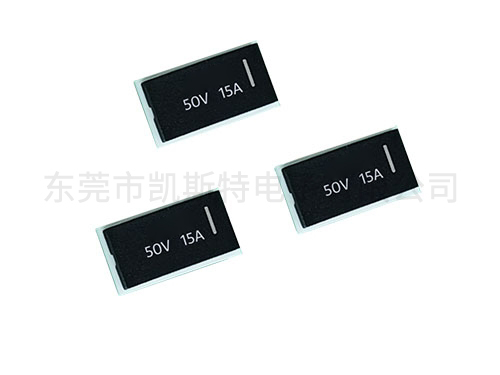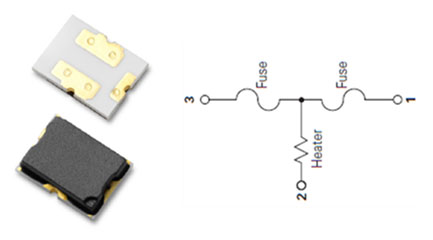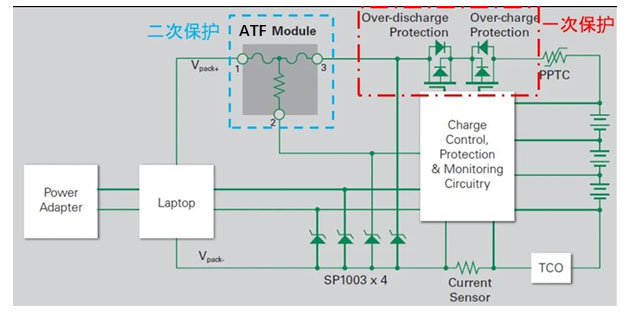




Three-terminal fuses are chip surface mount products, typically used in lithium-ion battery packs as secondary protection. They enable timely action when exposed to overcurrent and overvoltage risks, effectively reducing fires and explosions caused by overcharging, overdischarging, and short circuits in lithium-ion batteries, and keeping the damage to circuits and components within the smallest possible area.
Applications include:
Wireless walkie-talkies, vacuum cleaners, power tools, tablet computers, electric bicycles, uninterruptible power supplies and portable energy storage are all applied to products containing batteries.
Electrical structure
It consists of three terminals. Two fuses made of alloy metal are connected in series. In case of overcurrent or short circuit faults, they can melt and cut off the circuit to provide protection. The intermediate series heater is designed to form a series circuit with the MOSFET in the circuit. When the system detects that the battery is overvoltage, the MOSFET conducts, and the heater starts to heat up, thereby blowing the fuse and cutting off the circuit.

Lithium-ion battery packs are typically composed of battery cells and battery management systems. The primary protection is composed of an IC and back-to-back dual MOSFETs forming a protection circuit. The overcharge and overdischarge protection mechanism detects the terminal voltage of the battery and will shut down when it exceeds the set value.
MOSFET, thereby cutting off the circuit; When overcurrent or short circuit occurs, the MOSFET turns off and cuts off the circuit by detecting the voltage drop across its terminals. When it reaches the overcurrent set value, such as 0.1-0.2V, or the short circuit set value of 0.9-2V, the MOSFET turns off.
An advanced battery management system requires an additional secondary protection on top of the primary protection circuit, that is, a three-terminal fuse, a combination of passive and active. If it is a simple fuse, it serves as overcurrent or short-circuit protection, and when the heater is involved, an overvoltage protection function is added.
